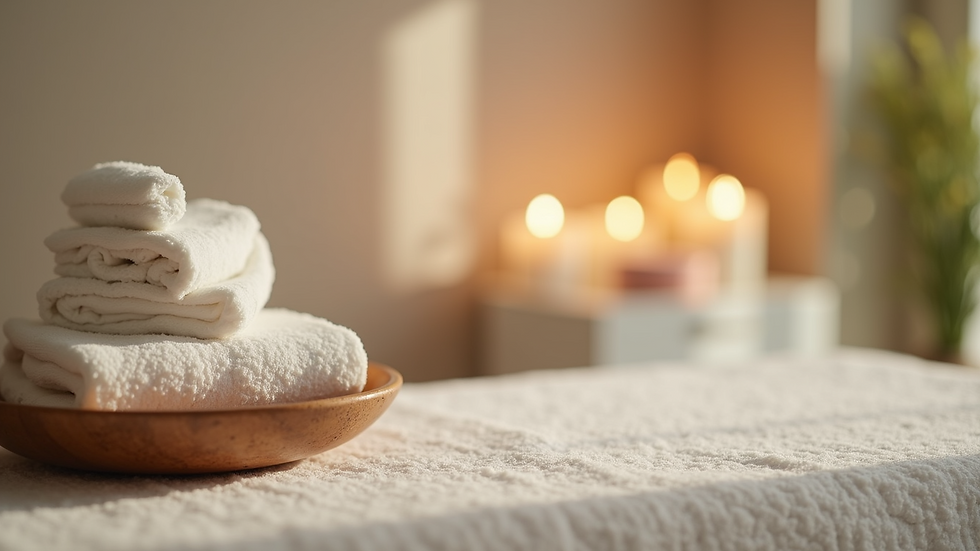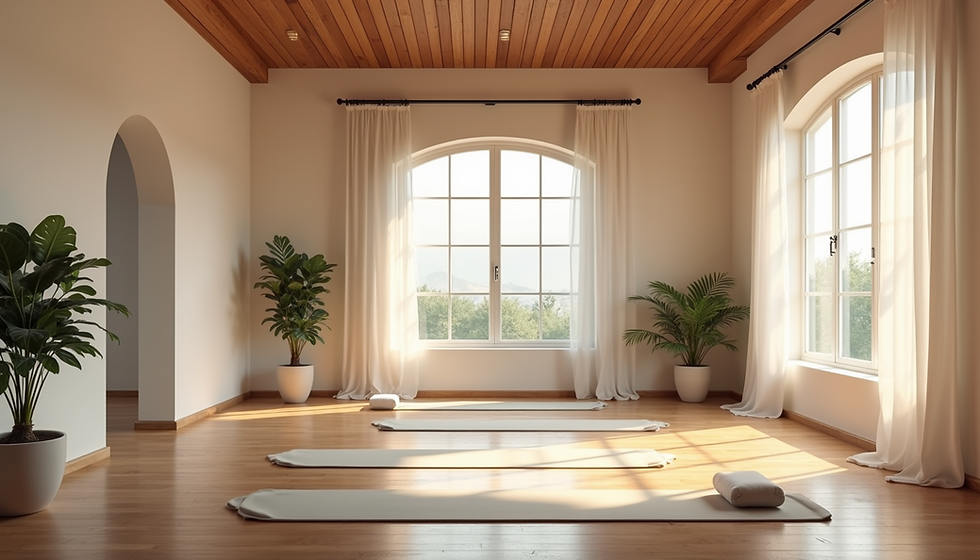Creating a Welcoming Atmosphere at Spas
- Uzuri Spa, LLC

- Jul 1
- 4 min read
Creating a welcoming atmosphere at spas is essential for ensuring clients feel relaxed, valued, and eager to return. Spas are not just places to receive treatments; they are sanctuaries for self-care and rejuvenation. A welcoming environment enhances the overall experience and encourages a sense of tranquility.
The Importance of a Welcoming Atmosphere
A welcoming atmosphere fosters relaxation. Research shows that a positive environment can lead to reduced stress levels and improved client satisfaction. When clients walk into a spa, they should immediately feel a sense of calm and comfort. This can be achieved through design, scent, lighting, and customer service. Statistics indicate that customers are more likely to return to a spa that prioritizes a warm and inviting ambiance.
Below are key elements that contribute to creating this much-needed atmosphere for clients.

Design Elements that Influence Comfort
Design is a powerful tool in establishing a welcoming atmosphere. The choice of color, furniture, and decor can significantly impact how clients feel in a space. Soft, earthy tones create feelings of serenity, while elements like natural wood and stone can enhance the connection with nature.
Use of Natural Light
Incorporating natural light is crucial. It not only makes the space feel more open but also has psychological benefits. Natural light improves mood and promotes relaxation. Consider using large windows or skylights in the treatment and relaxation areas. If natural light is limited, warm lighting can create a cozy and inviting ambiance.

Furniture and Layout
Choose comfortable and ergonomic furniture. Sofas and chairs should invite clients to sit comfortably and unwind. The layout should allow for easy flow and movement, allowing clients to walk through the spa effortlessly. Strategic placement of furniture can encourage interaction while maintaining privacy.
Sensory Engagement Through Scents and Sounds
The ambiance of a spa is created not only by visuals but also by the sensory experiences it provides. Scent and sound play significant roles in setting the mood.
Aromatherapy
Aromatherapy can enhance the experience significantly. Scents like lavender, eucalyptus, and chamomile are known for their calming properties. Consider using essential oil diffusers in treatment rooms and common areas. A pleasant fragrance can evoke feelings of relaxation and enhance the overall experience.
Soft Music
Background music can also influence the atmosphere of the spa. Soft, calming music can provide a soothing backdrop while clients enjoy treatments. Studies show that music can lower heart rates and alleviate stress, so choose tracks that promote relaxation. Classical music, ambient sounds, or sounds of nature can create a tranquil environment that makes clients feel at ease.
Exceptional Customer Service
While the physical environment is important, exceptional customer service is key to creating a welcoming atmosphere. Employees should be trained to provide friendly and attentive service.
Warm Greetings
From the moment clients walk in, warm greetings and smiles set the tone for their experience. Training staff to be engaging and friendly can create a lasting impression. Staff should also have the knowledge to answer client questions and offer recommendations based on individual preferences.
Personalization of Services
Personalizing services can make clients feel valued. Simple gestures, like remembering a client’s name or noting their favorite treatments, can significantly enhance their experience. Offering tailored services makes clients feel more connected to the spa, encouraging repeat visits.

The Role of Cleanliness and Maintenance
A clean and well-maintained spa is crucial for client satisfaction. Clients expect a hygienic environment when seeking relaxation and wellness. Regular cleaning schedules and maintenance can ensure that the spa remains pristine.
Visible Cleanliness
Make cleanliness visible through clean surfaces, fresh towels, and organized spaces. Customers should feel confident that they are in a safe and hygienic environment.
Routine Inspections
Routine inspections of treatment rooms and facilities are necessary. This not only upholds cleanliness but also allows for quick resolutions of any issues. A well-maintained environment contributes to a welcoming atmosphere by instilling confidence in clients.
Continuous Improvement and Feedback
To maintain a welcoming atmosphere, it’s essential to seek client feedback regularly. Surveys and reviews can provide insight into what clients appreciate and what can be improved.
Building Client Relationships
Establish strong relationships with clients by engaging them in conversations about their experiences. This not only provides valuable insights but also makes clients feel valued. Friendly interactions can lead to recommendations and referrals, growing the spa's clientele.
Adapting and Evolving
Be open to change. The spa industry trends continuously evolve, and staying current will help in maintaining a competitive edge. Adapting your services and atmosphere based on client feedback can result in exceptional customer experiences.

Final Thoughts
Creating a welcoming atmosphere at spas goes beyond aesthetics. It involves a holistic approach that encompasses design, sensory experiences, customer service, cleanliness, and continuous improvement. Every element contributes to the overall client experience, making them feel cherished and cared for.
Facilities like uzuri spa llc illustrate how attention to detail and a focus on creating a warm, inviting space can transform the typical spa experience into something memorable and worthwhile. By implementing these strategies, any spa can create an environment that clients look forward to escaping to, ensuring their well-being and satisfaction.
By prioritizing a welcoming atmosphere, spas can foster loyal relationships with their clients, promoting both business success and individual happiness.



Comments